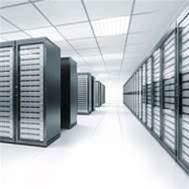The Australian Taxation Office completed its Change transformation approximately $42 million over budget for IT hardware, but clawed back the cost overrun by driving a hard bargain on mainframes.

A benefits realisation assessment (pdf) of the project, conducted by consultancy CPT Global, provides a fascinating glimpse into the inner workings of — and cost breakdowns for — the massive tax project.
While the final cost of the program — $814.6 million — came above the 2010 revised business case budget of $781.3 million, CPT notes the variance is "well within estimating tolerances of a program of this complexity and extended timeframe".
In other words, any over-budget aspects were minor.
However, the fact some cost overruns were related to hardware required for the project is new.
A breakdown of the $814.6 million spent by the department shows that hardware costs — which include mainframe, midrange and WAN equipment — came in at $139.4 million, or 17 percent of the total project cost.
Of the other IT elements, software such as Siebel CRM cost $29.7 million, and $12 million was spent on "ICT concept briefs". Both came in under budget.
However, a further breakdown by CPT shows that the hardware costs were $42.4 million — or 44 percent — above what the ATO had budgeted for.
"The increase in hardware costs relate to a combination of factors including an expectation of reduced capacity combined in mainframe and static midrange and storage expectations, and the extended time of the [Change] program [from four to seven years]," CPT notes.
Because the Change Program replaced a number of legacy systems, the ATO had hoped to achieve a 20 percent reduction in mainframe capacity it used, saving $19.3 million a year.
The department appears to have failed that objective as "infrastructure processing requirements... increased overall", principally because not all legacy tax processing systems were moved across to the new Integrated Core Processing (ICP) platform created under the Change program.
The mainframes also picked up online services and portal workloads that "were not specifically provisioned for", offsetting some of the potential efficiencies expected in the original business plans.
The ATO's saving grace was in its negotiation skills, having driven down the cost of buying mainframe processing capacity by 40 percent since 2004.
"These unit cost reductions completely offset the higher than planned mainframe usage, with a net overall saving to the ATO relative to the 2004 mainframe processing costs," CPT notes.
"However as this reduction has been due to improved commercial terms for mainframe capacity, rather than the expected reduction in the capacity required, we have considered this a zero benefit attributable to the Change Program."
Four-year return
Overall, CPT Global estimates a four-year return on investment on ATO's financial contribution to the project.
The ATO stumped up $597 million of the total $814 million budget, with the remainder coming from Government.
Tangible financial benefits were "conservatively estimated" at between $147 million and $153 million a year.
Although this was lower than initially expected, CPT notes that a large number of intangible benefits have been realised, and that "further benefit realisation" is also possible, including in the areas of business intelligence and data analytics.
The analysis also notes the importance of achieving benefits and value rather than focusing too heavily on "cost control".



_(22).jpg&h=140&w=231&c=1&s=0)
_(20).jpg&h=140&w=231&c=1&s=0)




_(26).jpg&w=100&c=1&s=0)

 iTnews Executive Retreat - Security Leaders Edition
iTnews Executive Retreat - Security Leaders Edition












_(1).jpg&h=140&w=231&c=1&s=0)



